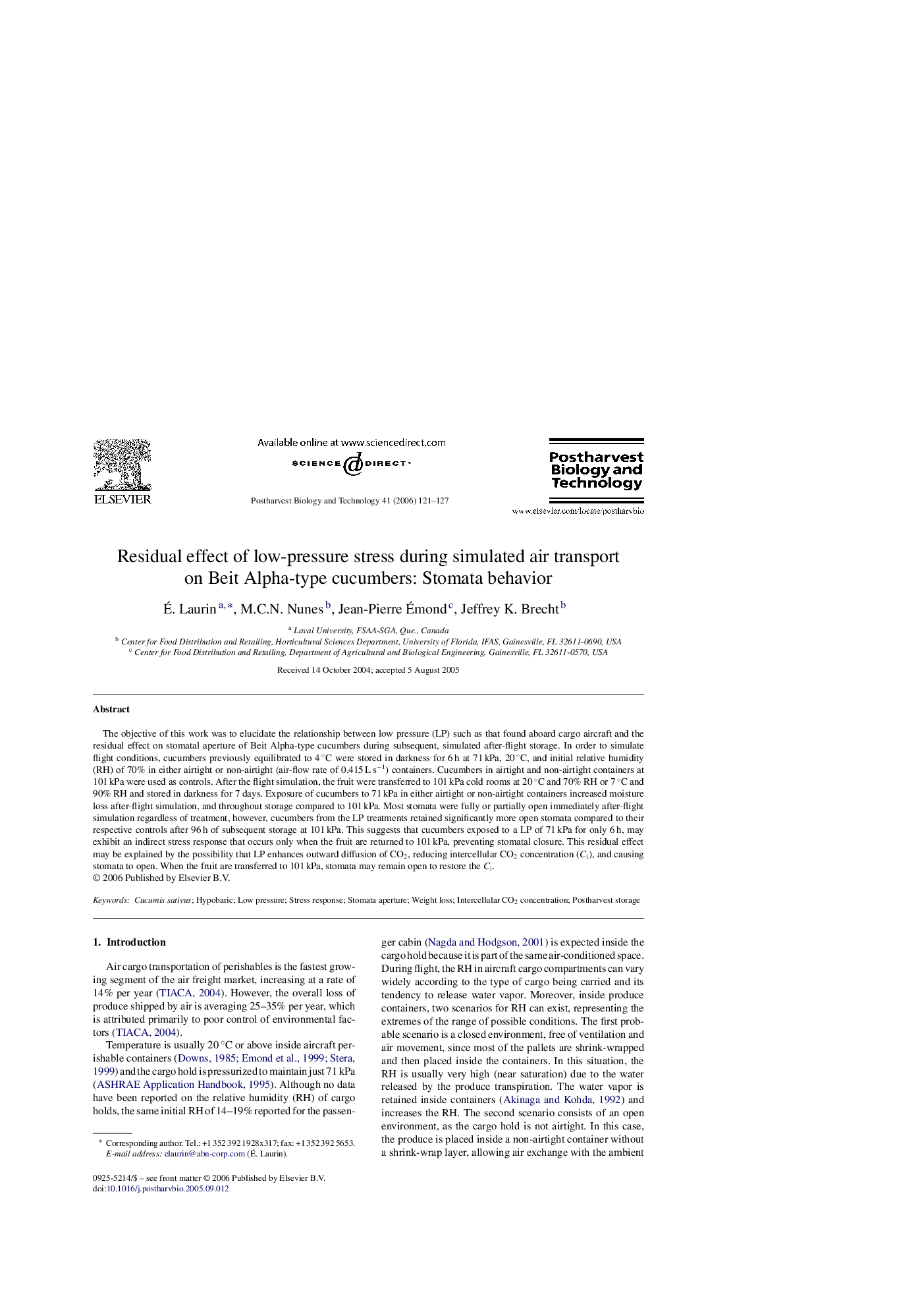| Article ID | Journal | Published Year | Pages | File Type |
|---|---|---|---|---|
| 4519597 | Postharvest Biology and Technology | 2006 | 7 Pages |
The objective of this work was to elucidate the relationship between low pressure (LP) such as that found aboard cargo aircraft and the residual effect on stomatal aperture of Beit Alpha-type cucumbers during subsequent, simulated after-flight storage. In order to simulate flight conditions, cucumbers previously equilibrated to 4 °C were stored in darkness for 6 h at 71 kPa, 20 °C, and initial relative humidity (RH) of 70% in either airtight or non-airtight (air-flow rate of 0.415 L s−1) containers. Cucumbers in airtight and non-airtight containers at 101 kPa were used as controls. After the flight simulation, the fruit were transferred to 101 kPa cold rooms at 20 °C and 70% RH or 7 °C and 90% RH and stored in darkness for 7 days. Exposure of cucumbers to 71 kPa in either airtight or non-airtight containers increased moisture loss after-flight simulation, and throughout storage compared to 101 kPa. Most stomata were fully or partially open immediately after-flight simulation regardless of treatment, however, cucumbers from the LP treatments retained significantly more open stomata compared to their respective controls after 96 h of subsequent storage at 101 kPa. This suggests that cucumbers exposed to a LP of 71 kPa for only 6 h, may exhibit an indirect stress response that occurs only when the fruit are returned to 101 kPa, preventing stomatal closure. This residual effect may be explained by the possibility that LP enhances outward diffusion of CO2, reducing intercellular CO2 concentration (Ci), and causing stomata to open. When the fruit are transferred to 101 kPa, stomata may remain open to restore the Ci.
